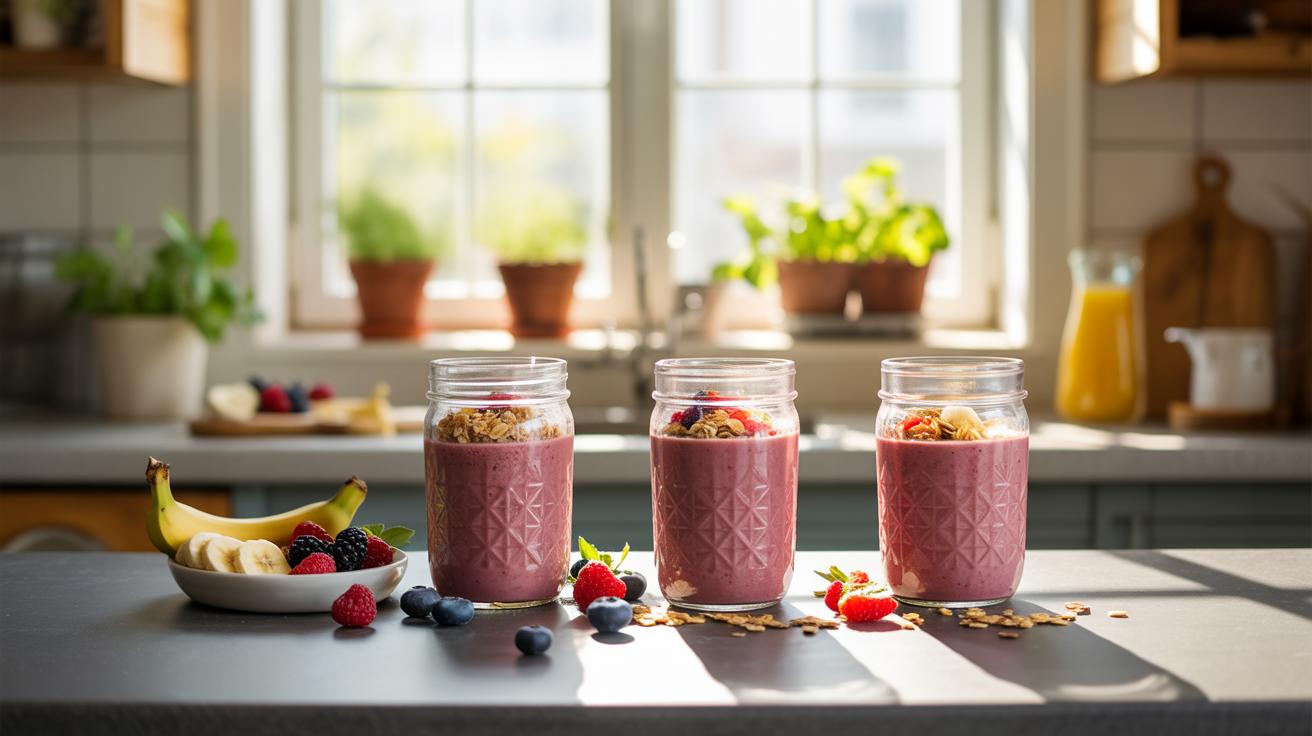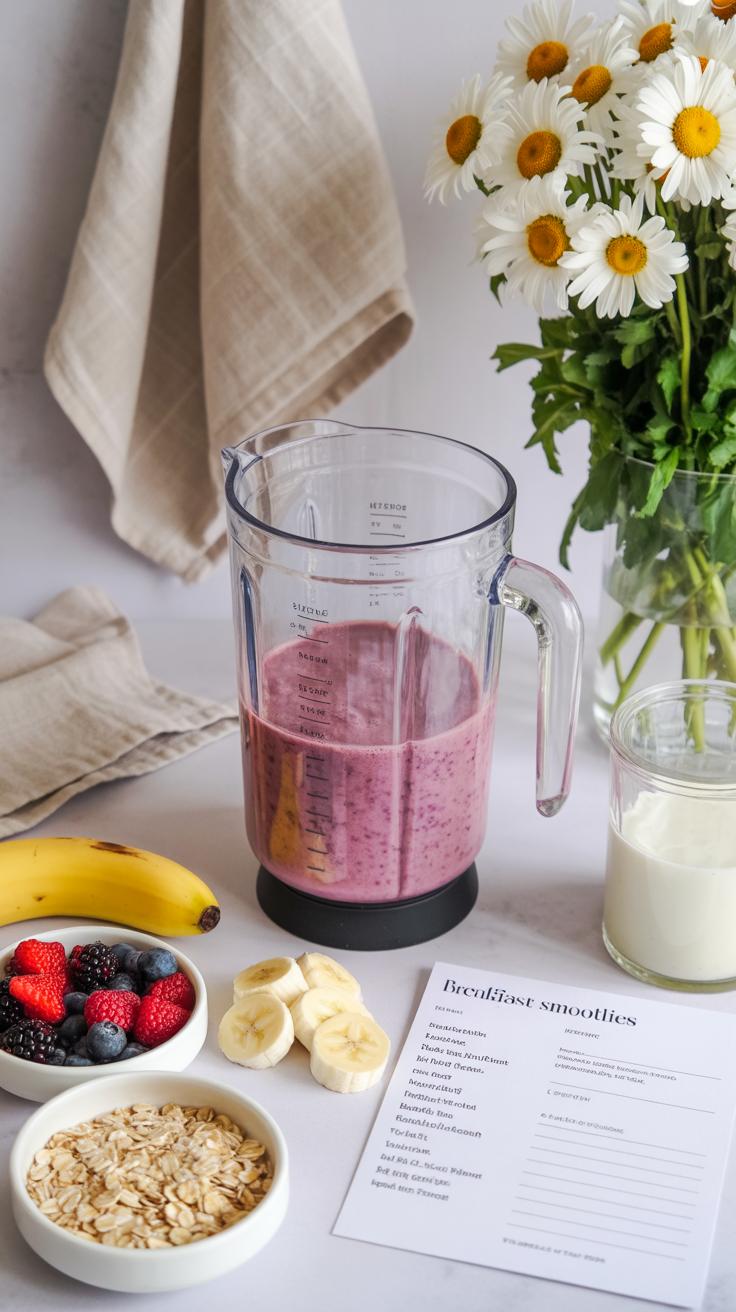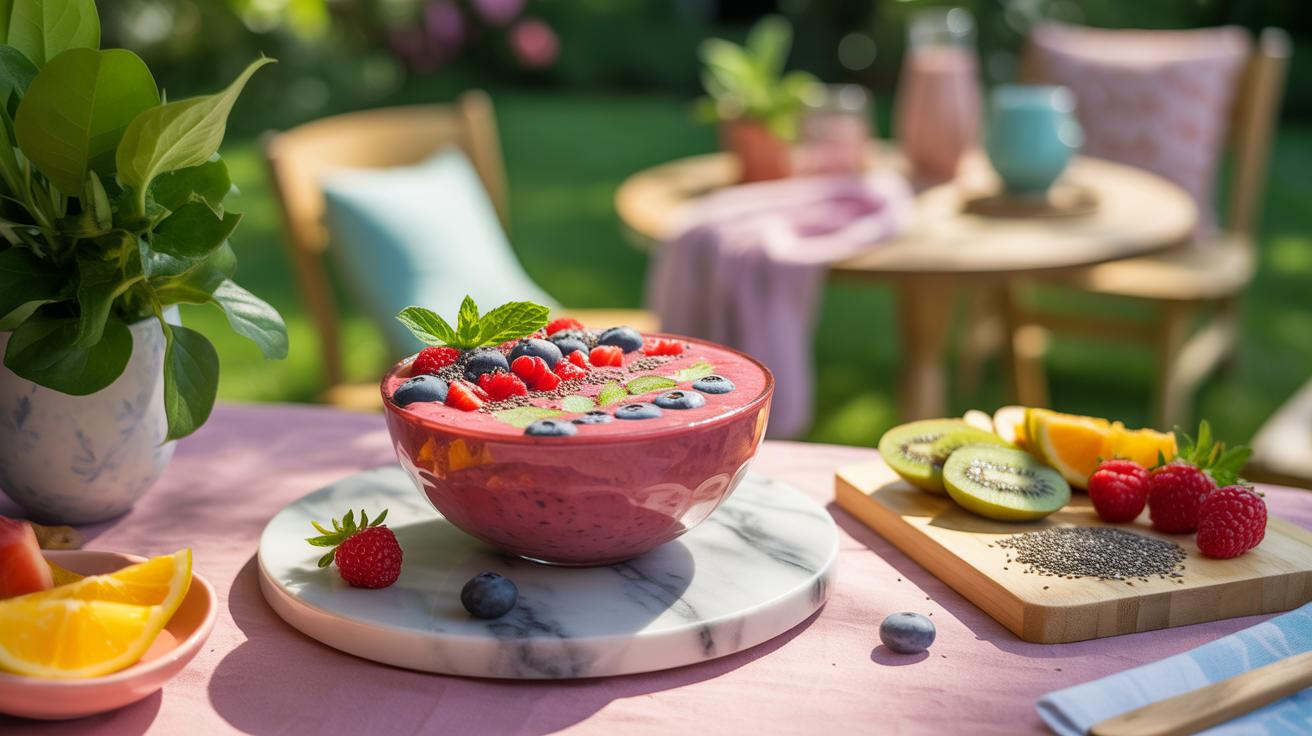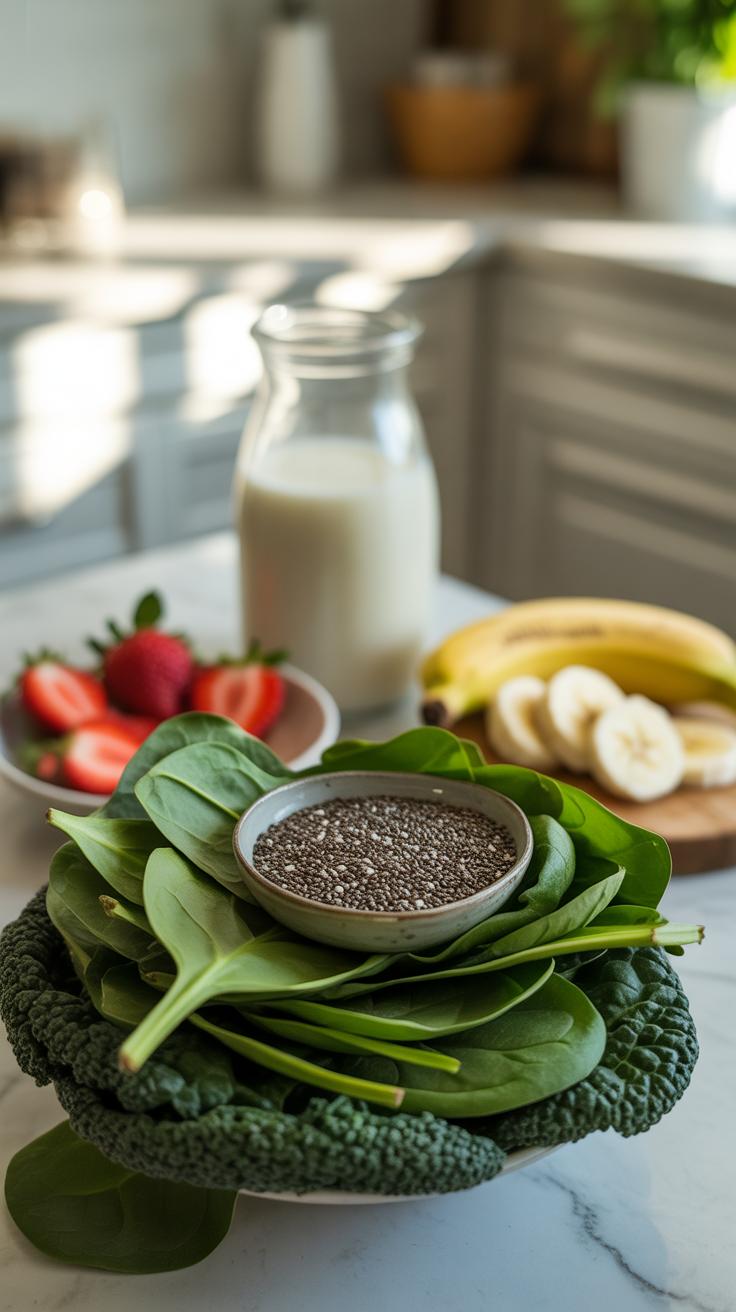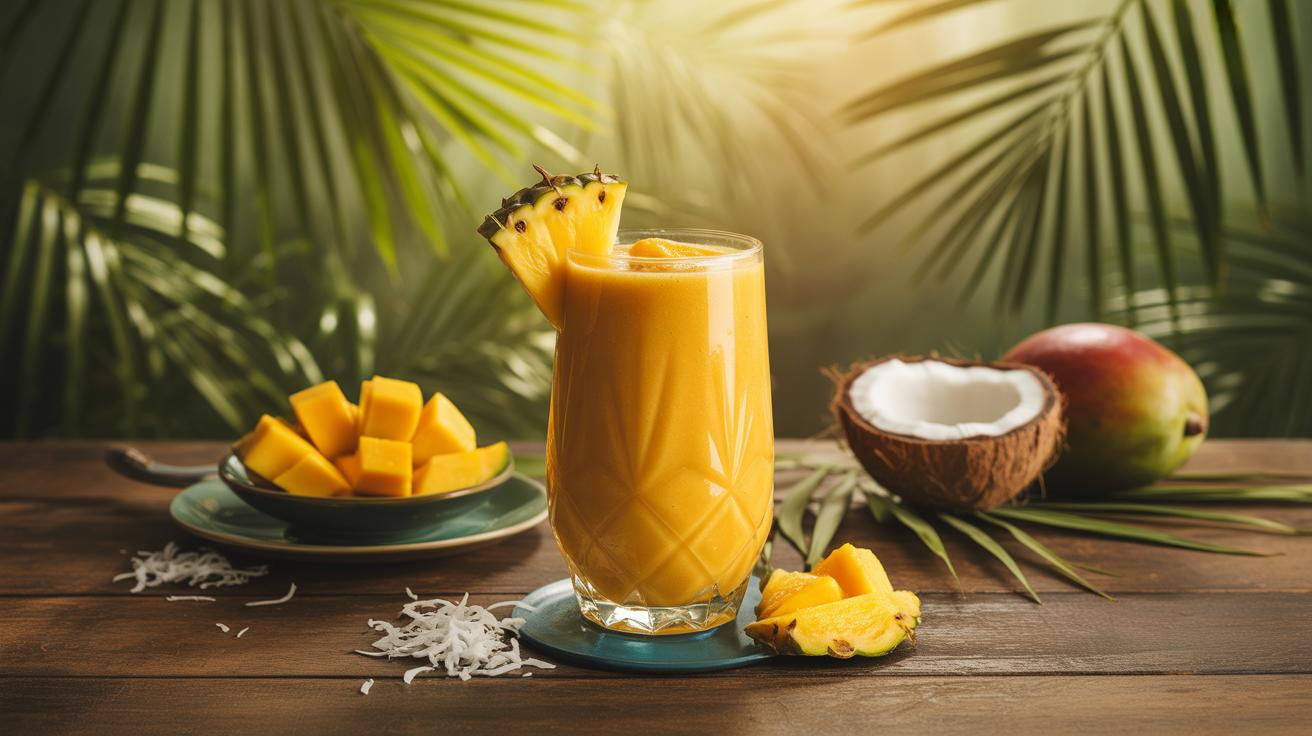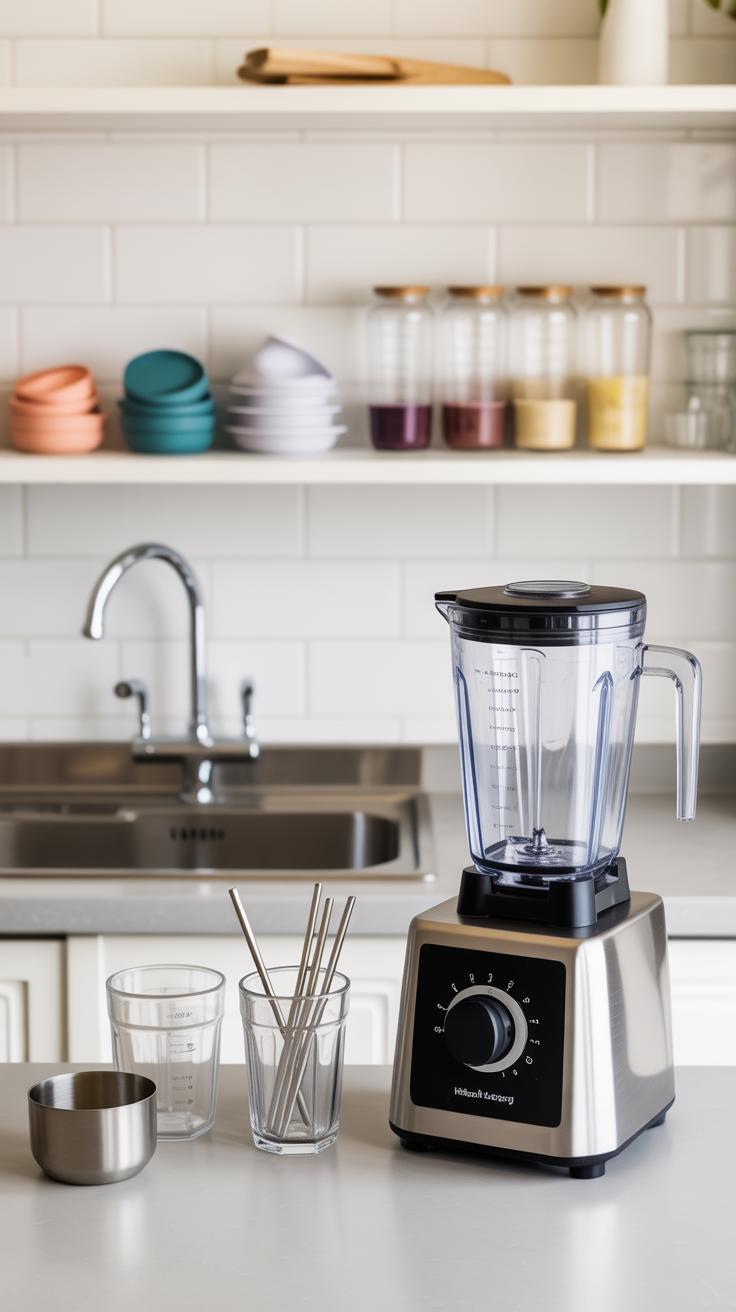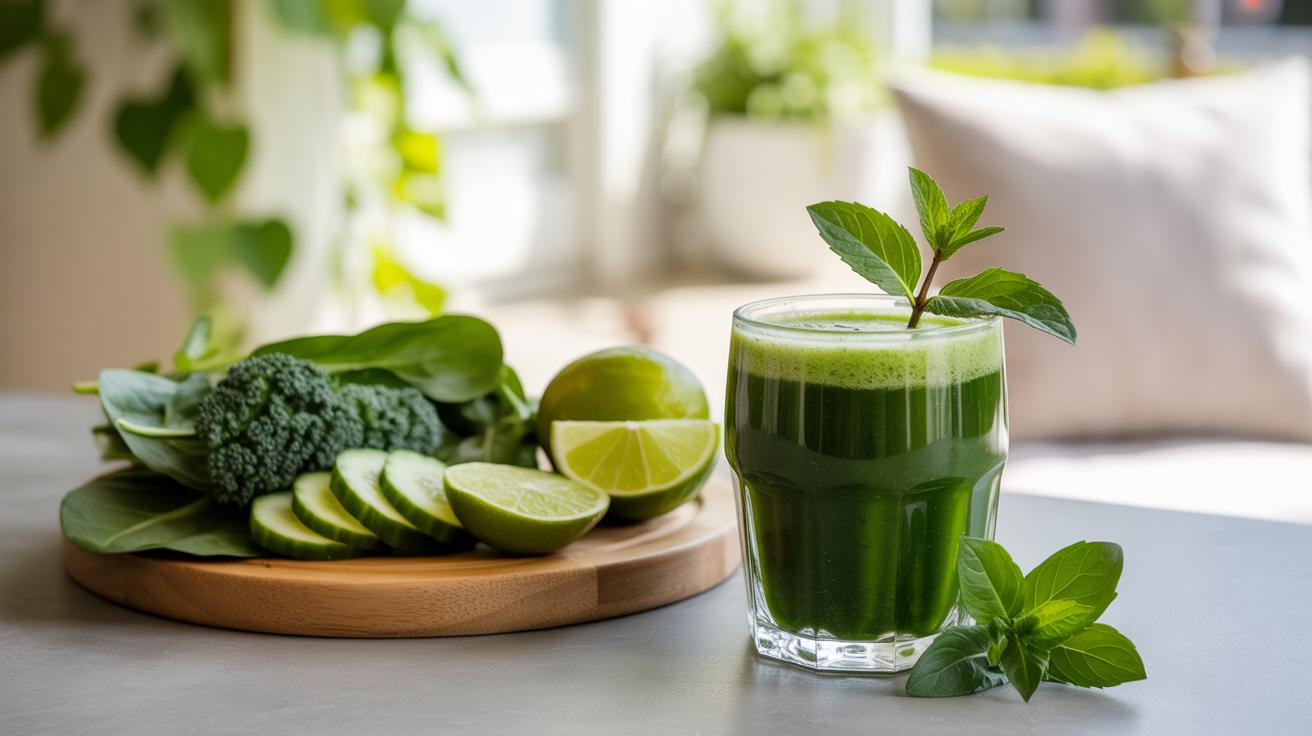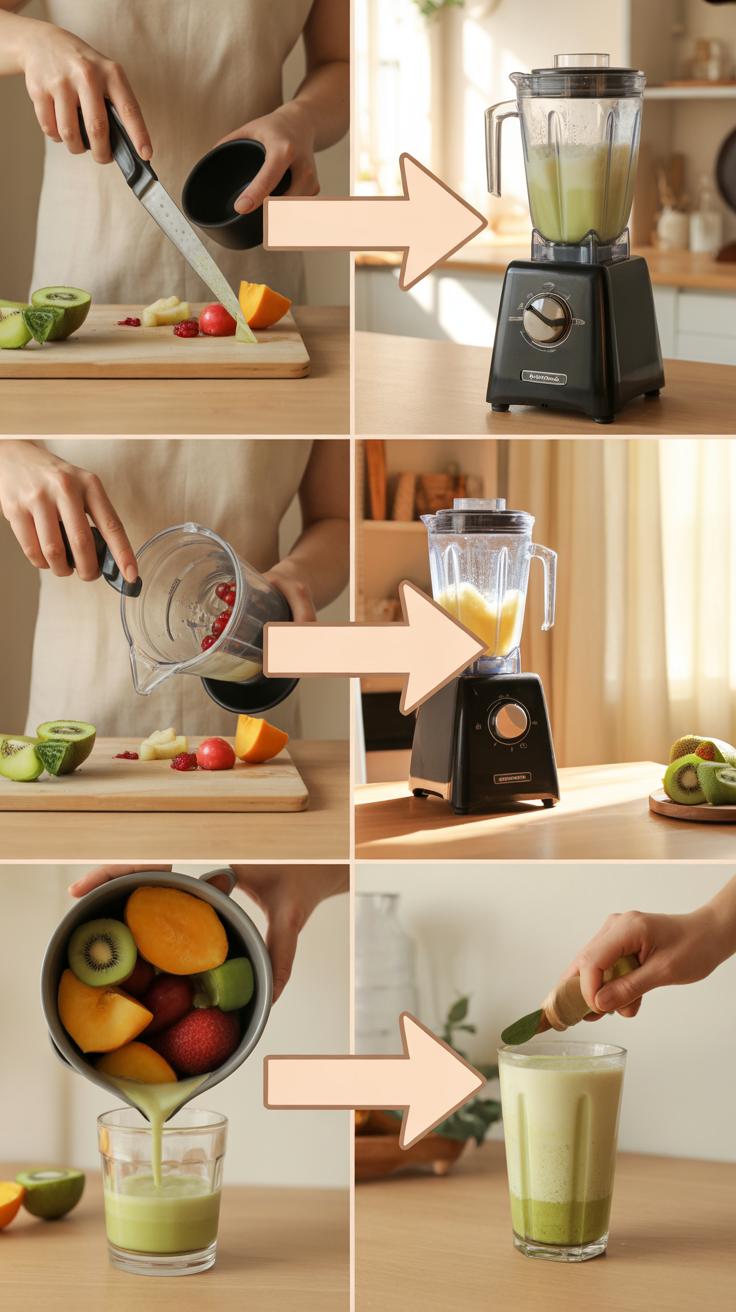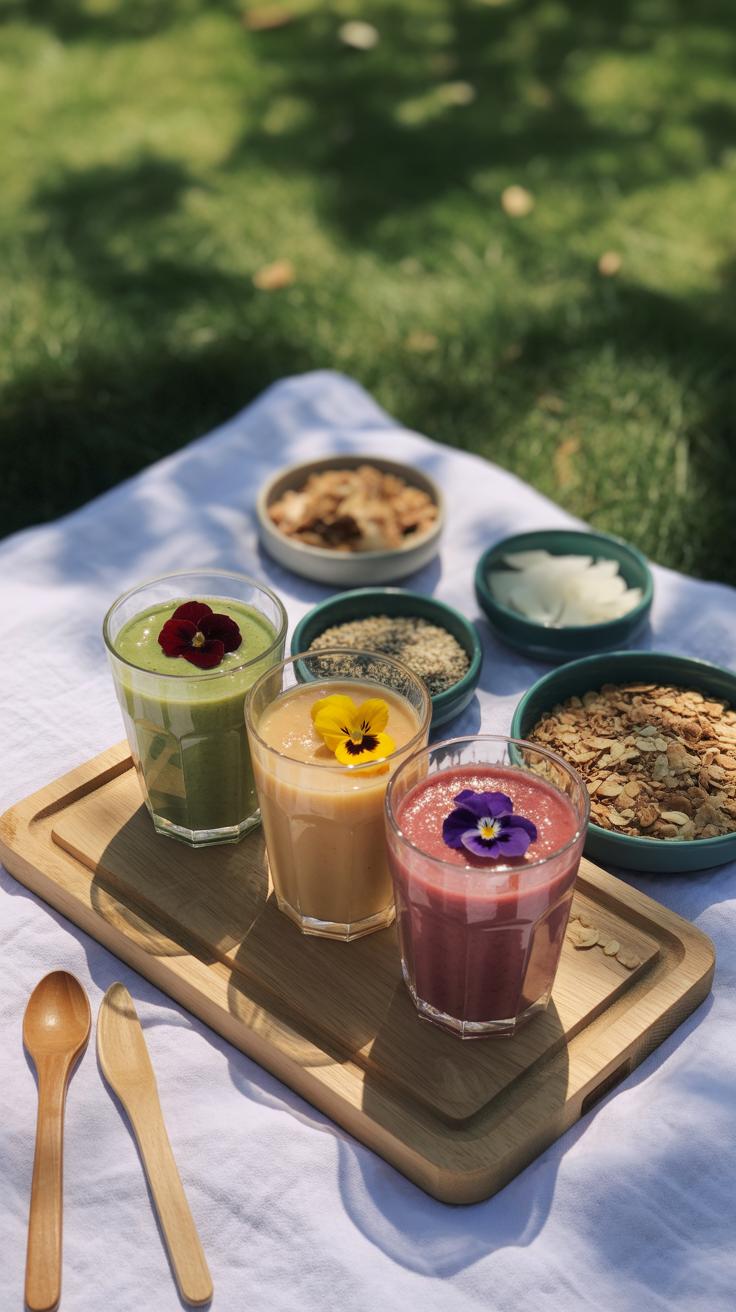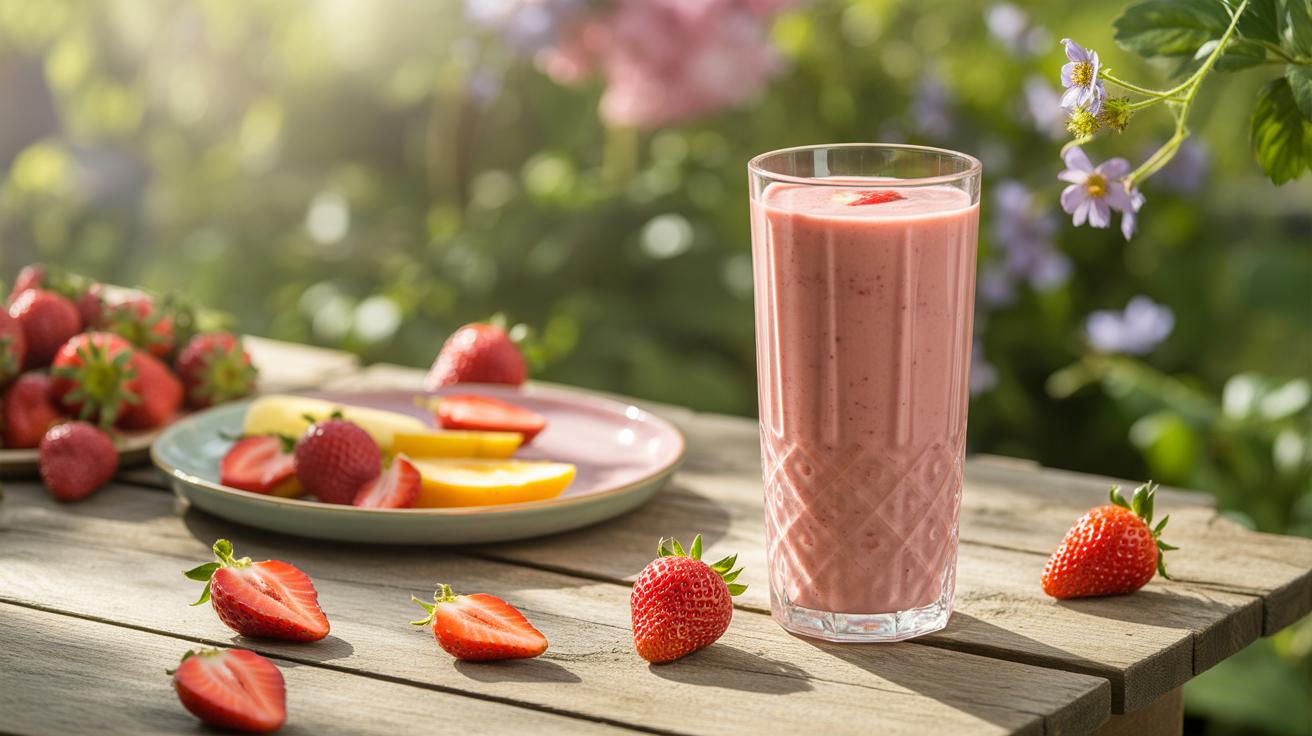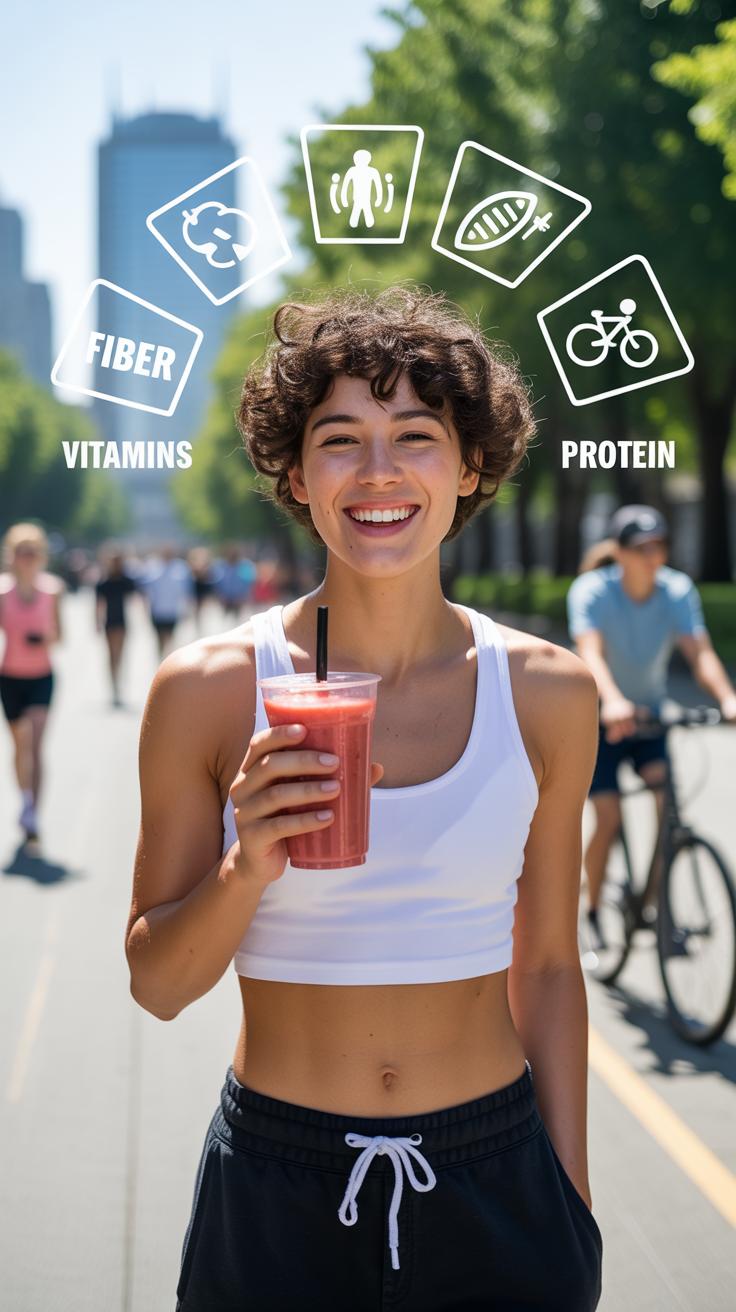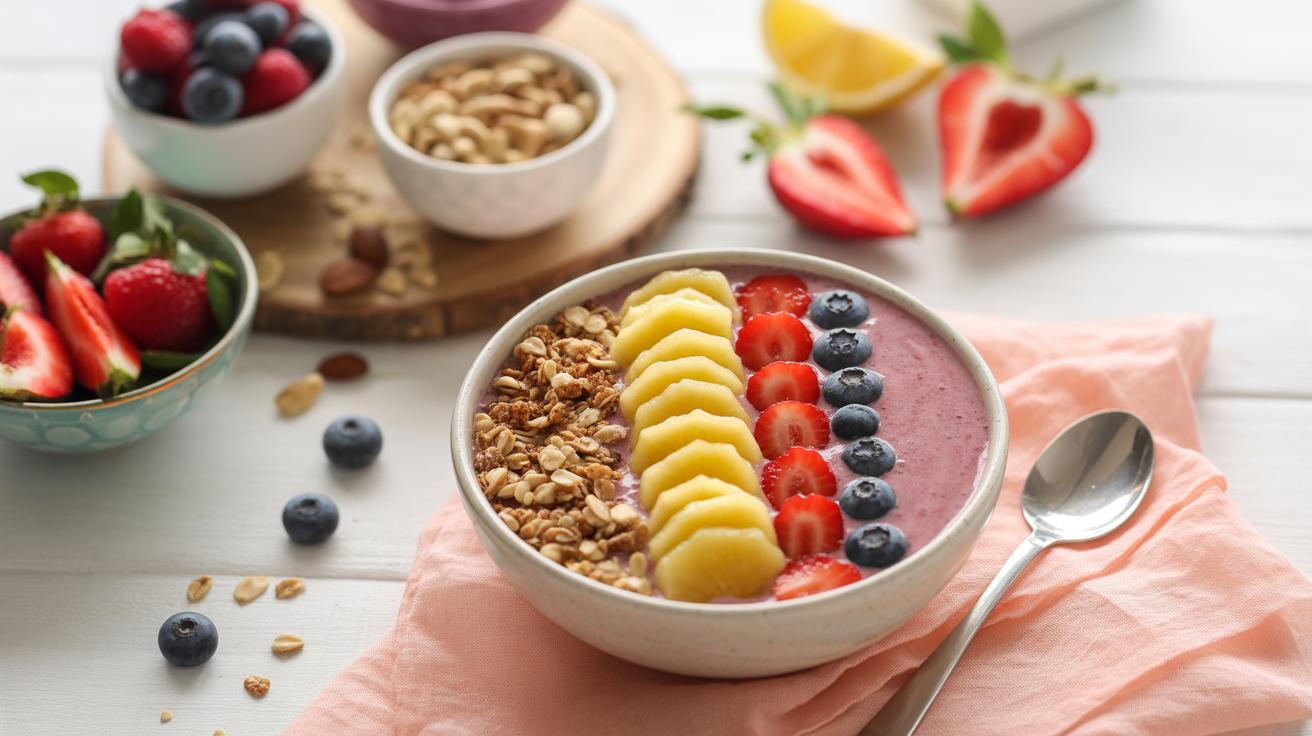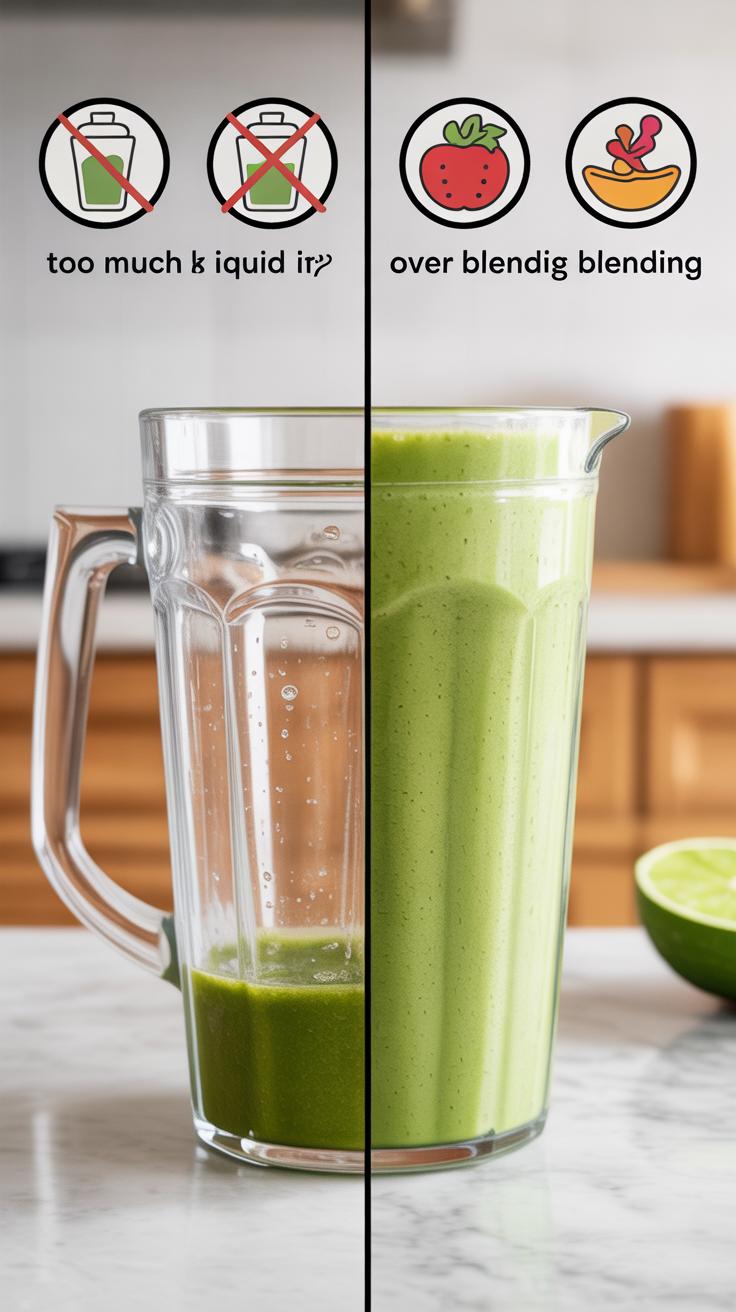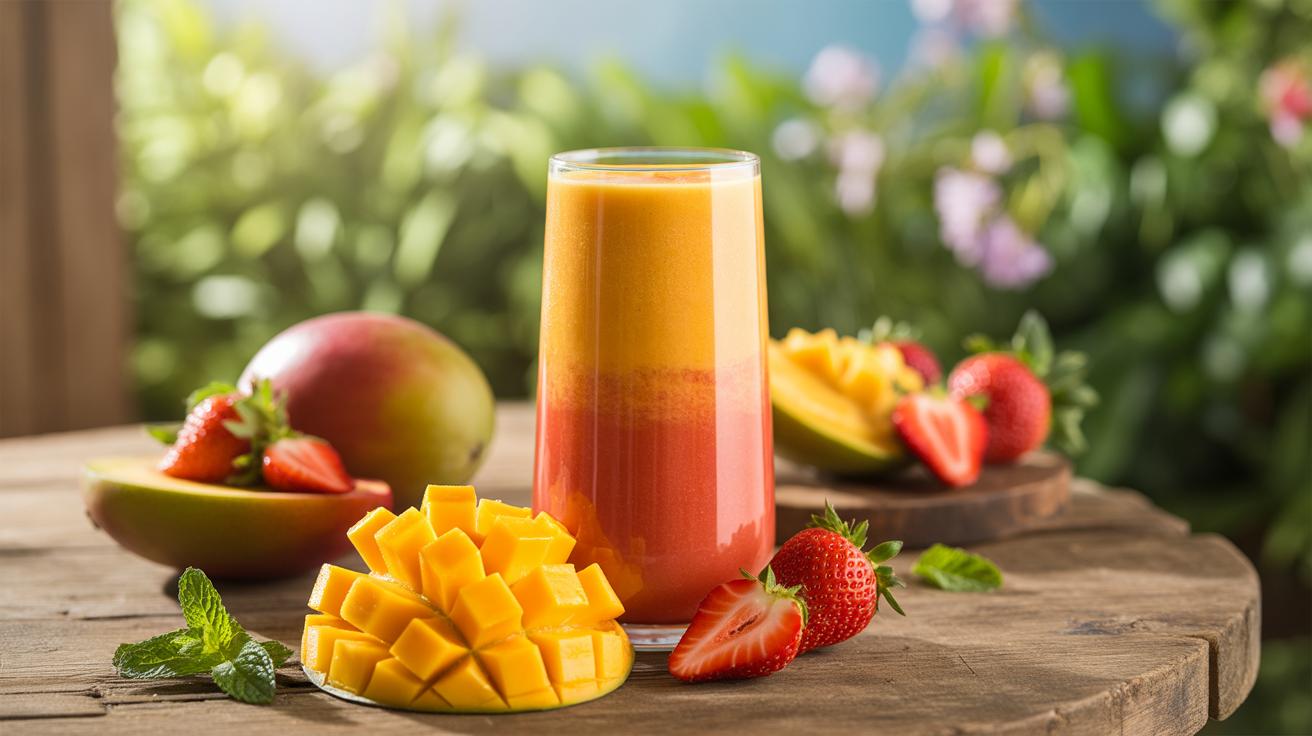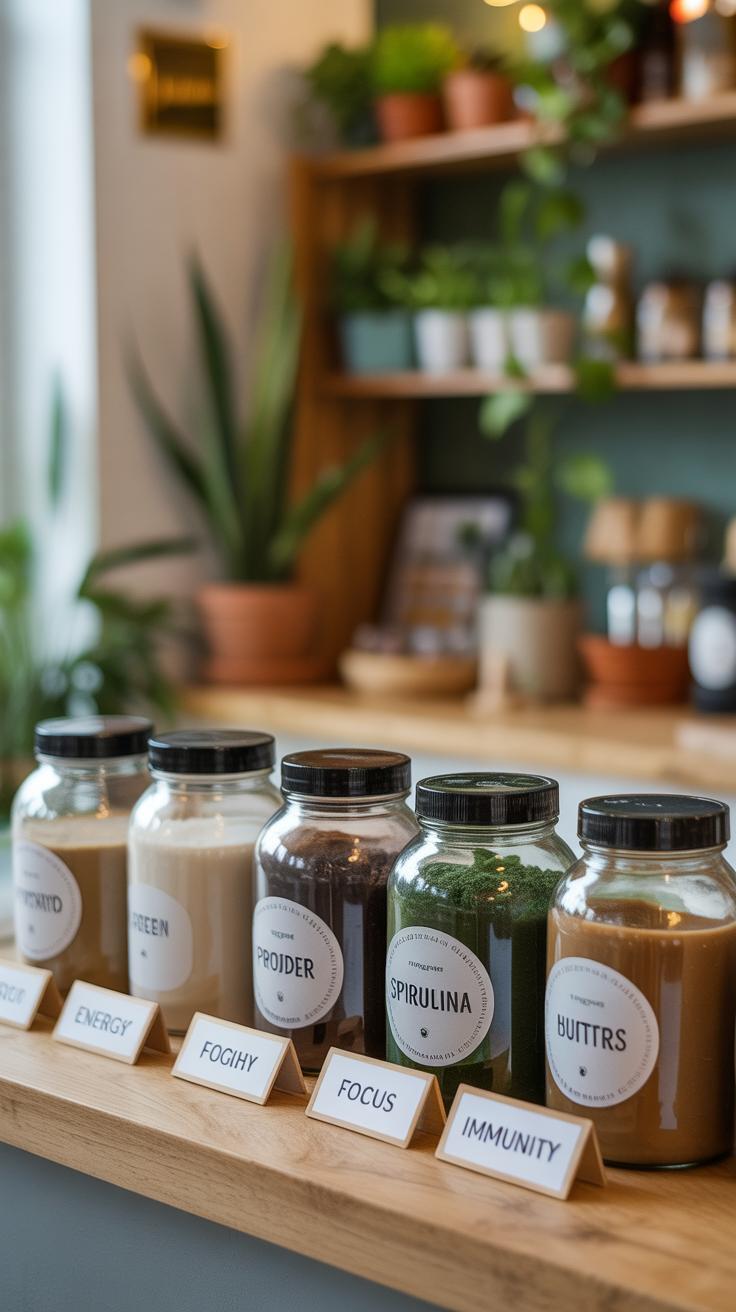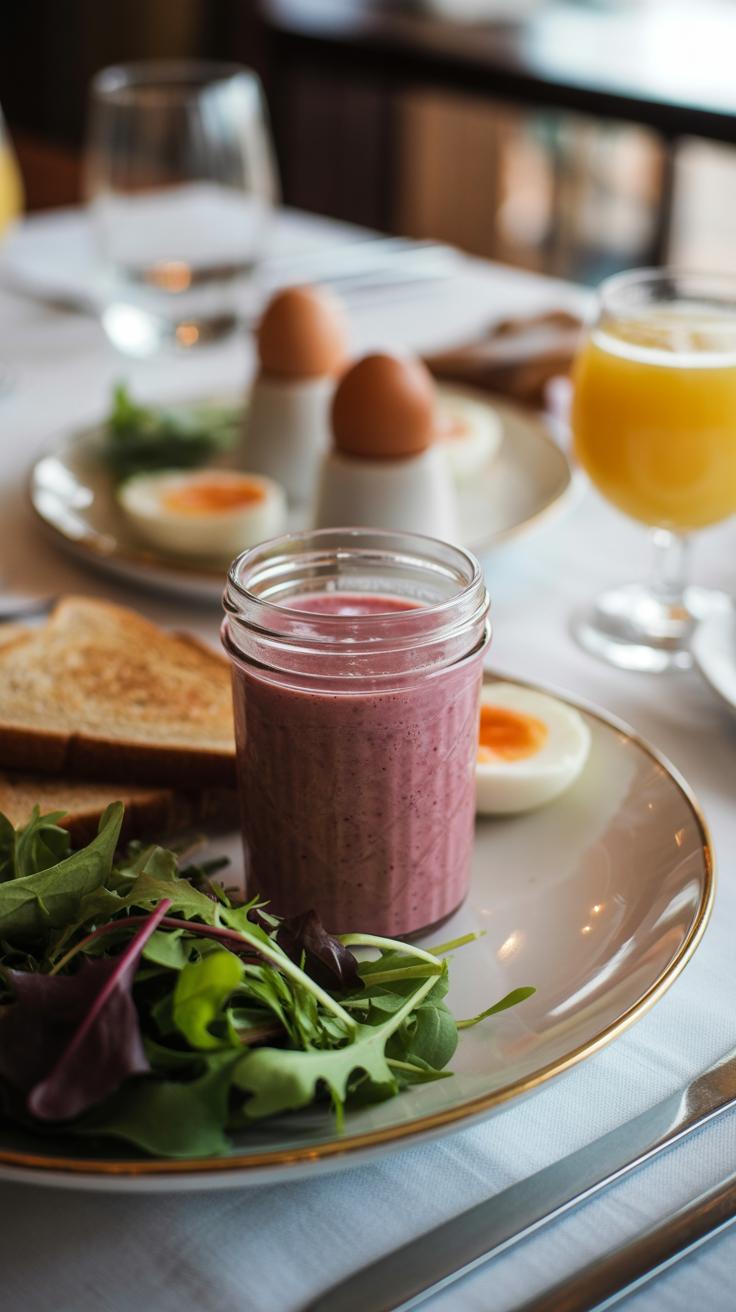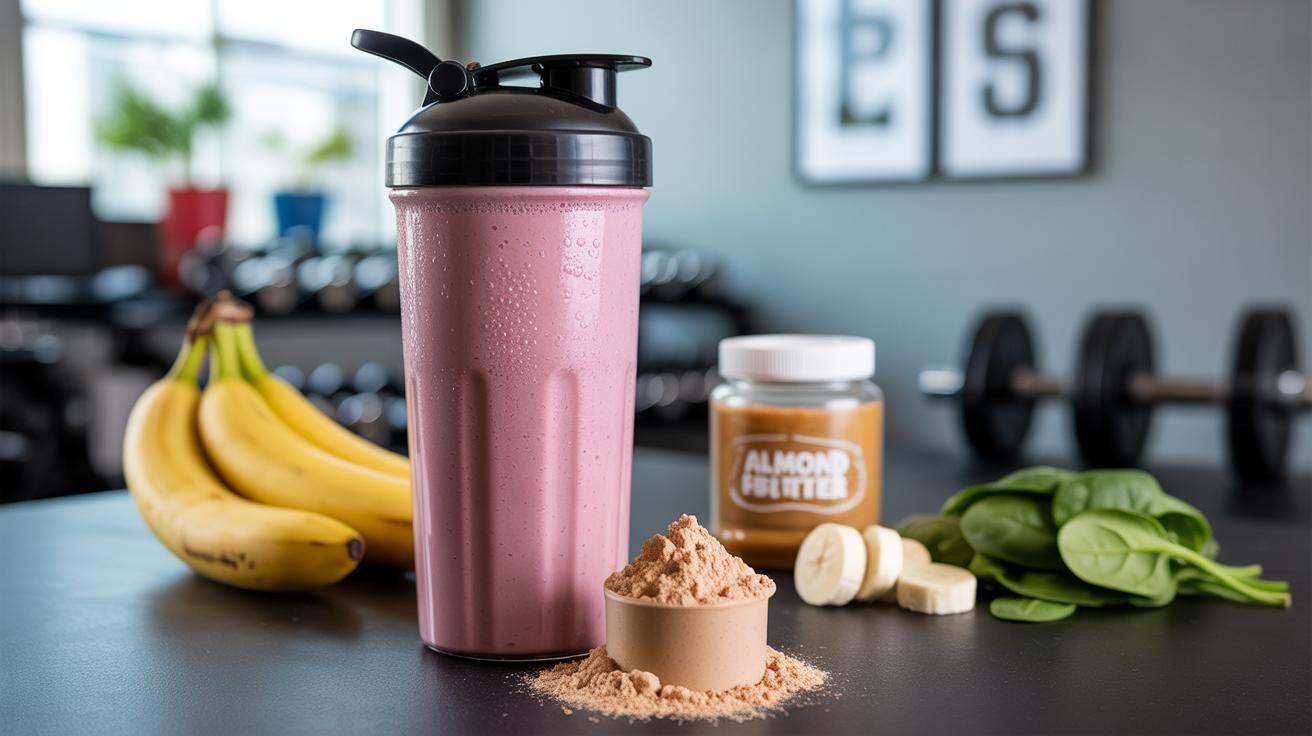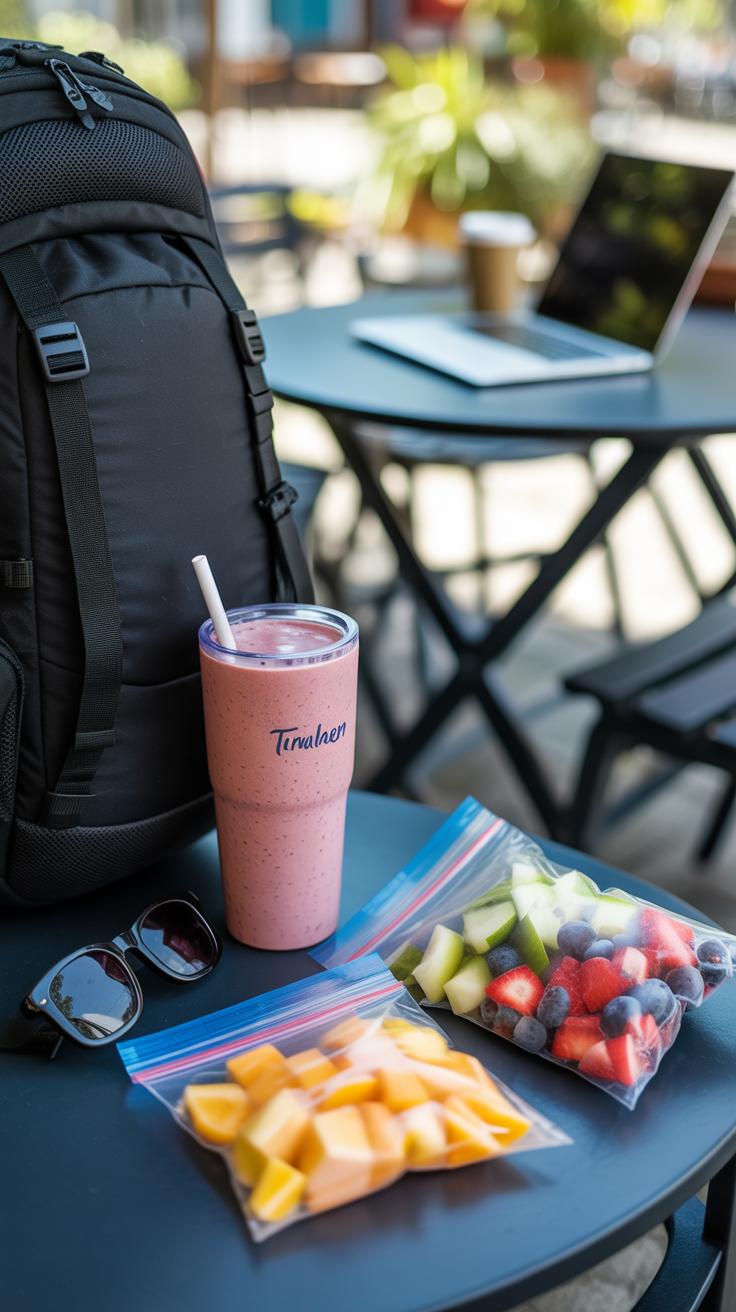Introduction
Breakfast is the first meal of the day and gives you the energy to start your activities. A breakfast smoothie mixes fruits, vegetables, and other healthy ingredients to make a refreshing drink. Smoothies are easy to prepare and can deliver important nutrients.
This article explores the benefits of breakfast smoothies and guides you through making your own. You will learn about choosing ingredients, blending, and how smoothies fit into a healthy lifestyle. Whether you want a quick meal or a tasty way to eat more fruits and veggies, breakfast smoothies can be a great option.
Understanding Breakfast Smoothies
What Is A Breakfast Smoothie
A breakfast smoothie is basically a blended drink made by combining various ingredients like fruits, vegetables, yogurt, and milk alternatives. Sometimes people throw in things like nuts, seeds, or protein powders too. They are thick—think drinkable but more filling than juice. The idea is to pack in nutrients and energy quickly without having to chew or spend much time in the kitchen.
Common fruits include bananas, berries, or mangos, often paired with leafy greens like spinach or kale. Yogurt adds creaminess and some protein, while almond or oat milk is a popular choice instead of regular milk. The mix varies a lot depending on taste and dietary needs, but these basics tend to appear most often. In a way, they replace your typical cereal or toast but feel lighter and sometimes more refreshing.
How Smoothies Became Popular
Smoothies started gaining attention decades ago but really took off alongside health trends in the 70s and 80s. Initially popular among fitness enthusiasts and health food circles, they slowly made their way into mainstream culture as a neat, grab-and-go option. Juice bars and health stores played a big role, introducing more people to the concept.
Nowadays, almost any café or grocery store has ready-made smoothies or ingredients for making your own. This ease of access helped spread their popularity further. People appreciate them for being quick and nutritious, especially when mornings get hectic. I’ve noticed that more of my friends opt for smoothies over traditional breakfasts, partly because they feel lighter but still satisfying—though I wonder if they sometimes miss out on chewing, which seems kind of important, right?
Choosing Healthy Ingredients For Your Smoothies
Picking what goes into your breakfast smoothie shapes both its taste and how well it fuels you. Fruits and vegetables are the obvious stars, but which ones really bring something valuable? Think about berries like blueberries and strawberries. They pack antioxidants and vitamins that help your body fight off stress—something I’ve noticed especially on busy mornings. Bananas add creaminess and potassium, which supports muscle function. Leafy greens, especially spinach or kale, might seem a bit overpowering, but they add iron and fiber. You might hesitate if you’re used to sweeter smoothies, but a handful often goes unnoticed in flavor and boosts nutrition.
Proteins and fats aren’t just fillers. Adding protein powder, whether plant-based or whey, can keep you full longer and stabilize your energy. I sometimes throw in a spoonful of peanut butter or nut butter, both tasty and providing healthy fats and protein. Seeds like chia or flaxseed are small additions that carry omega-3s and fiber; they also thicken the smoothie in a way I find appealing. Olive or avocado oil might sound odd in a smoothie, but in tiny amounts, they add healthy fats without a strong taste. Does your smoothie leave you hungry soon after? Perhaps it’s missing this balance.
Choosing ingredients isn’t only about health; it’s about what works for your routine. A dash of experimentation might be needed before you find your perfect combination that wakes you up and stays with you through the morning.
Tools You Need To Make Smoothies
Choosing The Right Blender
Not all blenders are created equal when it comes to smoothie making. Some are built for crushing ice and frozen fruit easily, while others might struggle a bit. You might want something powerful enough to handle tougher ingredients like nuts or fibrous veggies. Personally, I found that a blender with at least 600 watts does the job without too much noise or fuss.
Think about the size and shape of the pitcher, too. Tall and narrow jars help create a vortex that pulls everything toward the blades, usually blending more evenly. But, if you’re limited on storage, a compact model might suit your kitchen better. Some blenders come with multiple speed settings or pre-programmed smoothie cycles, which can be handy if you like some automation.
Should you go for a personal blender or a classic countertop one? If speed and simplicity matter most, personal blenders often come with takeaway cups. But, they might not handle large batches well. Countertops are flexible but take more space. It’s a bit of a trade-off—you may want to test some models if you can.
Additional Tools To Help
A blender alone won’t get you there smoothly—you’ll need some simple extras to keep things tidy and precise. Measuring cups or spoons make it easier to stick to consistent recipes, especially if you’re tracking calories or nutrients. I remember once guessing quantities and ending up with a smoothie that was too watery; lesson learned.
A sturdy cutting board and a sharp knife are essential, too. Prepping fruits and veggies might seem straightforward, but having a dedicated space speeds things up and keeps your counter clean. Also, storage containers come in handy if you like making smoothies ahead or saving leftovers. Look for ones with tight lids and sizes that fit typical blender jars.
Ultimately, these tools aren’t fancy, but they make a difference. They help smooth out the process, literally and figuratively, and that little boost might just encourage you to keep making breakfast smoothies a regular habit.
Step by Step Smoothie Preparation
Preparing Your Ingredients
Start by selecting fresh fruits and vegetables. Washing them thoroughly removes dirt and any residues—take your time here; it’s easier than dealing with gritty bites later. For leafy greens like spinach or kale, a gentle rinse works well, while firmer fruits such as apples or carrots may need a scrub. Cut ingredients into smaller pieces before measuring to avoid uneven blending; think bite-sized chunks rather than huge slices. Measuring doesn’t have to be exact—about a cup of fruit or veggies per smoothie usually does the trick. Sometimes, I find eyeballing works just as fine, but if precision is your thing, a kitchen scale can help. Preparing ingredients properly sets the foundation for a smoother blending experience.
Blending Tips For Best Texture
Layering ingredients in the blender matters more than you might think. Liquids should go in first—water, milk, or juice—this helps blades move freely at the start. Next, add softer items like yogurt or mashed banana, then firmer fruits and veggies, and finish with ice or frozen fruit on top. It sounds a bit particular, but this order prevents clumping and uneven chunks. Start blending on a low setting to break down the toughest parts, then slowly increase speed to high. Pulse occasionally to check consistency, and don’t be shy about stopping to stir or add more liquid if things seem too thick. Some mornings, my smoothie isn’t perfect—too chunky or too thin—but a quick remix usually saves it.
Popular Breakfast Smoothie Recipes
Picking the right breakfast smoothie can be surprisingly personal—sometimes you want something fruity and sweet, other mornings a green boost feels better. I’ve gathered ten recipes that mix it up a bit, offering different flavors and health perks. Maybe you’ll find one that becomes your go-to. Or you’ll feel like trying a new combo each day. Either way, it’s about easy and nutritious blends that make mornings just a bit smoother.
Fruit-Based Smoothies
Fruit smoothies rest mostly on the familiar—bananas, berries, tropical fruits—but they don’t have to be boring. Here are a few to try:
- Mixed Berry Blast: Strawberries, blueberries, raspberries, a banana for creaminess, and a splash of almond milk. It’s simple but has a nice balance of tart and sweet.
- Mango Pineapple Sunrise: Mango chunks, pineapple, a touch of coconut water, and Greek yogurt. You get tropical vibes plus a protein kick.
- Banana Peanut Butter: Banana, peanut butter, skim milk, and a little honey. It’s more filling, almost like a mini-meal sometimes.
- Peach and Orange: Fresh peaches, orange juice, and a bit of vanilla yogurt. This one feels light but still satisfying.
- Apple Cinnamon: Apple slices, cinnamon, oats, and milk. Not your typical smoothie taste but kind of comforting, isn’t it?
Each of these fruits brings different vitamins and natural sugars to start your day. Sometimes, I find just a splash of almond or oat milk changes the whole texture and taste, so don’t hesitate to experiment.
Green And Vegetable Smoothies
Now, green smoothies can feel a bit intimidating at first, especially if you’ve always gone for fruit-only. But the truth is, adding veggies doesn’t mean ignoring flavor. Here’s a selection that’s mild and even enjoyable—honestly:
- Spinach and Banana: Spinach, banana, Greek yogurt, and a little honey. It hides the spinach well, making it a good starter.
- Kale and Pineapple: Kale, pineapple, coconut water, and chia seeds. The pineapple masks the bitterness but gives you that fiber punch.
- Cucumber Mint: Cucumber, fresh mint, lime juice, and a Granny Smith apple. Refreshing and just a little different than the usual smoothies.
- Carrot Ginger: Carrot, fresh ginger, orange, and a scoop of vanilla protein powder. This one wakes you up a bit more than you’d expect.
- Avocado and Spinach: Creamy avocado, spinach, banana, and almond milk. It’s smooth and filling without feeling heavy.
Veggies in smoothies might sound tricky at first—you might wonder if blending them softens their punch or if the flavors clash. But mixing greens with fruit or a creamy base usually balances the taste, making it easy to sneak more nutrients into your morning without forcing yourself.
How Breakfast Smoothies Benefit Your Health
Drinking a breakfast smoothie offers several nutritional benefits that can really shape how your day unfolds. For one, smoothies provide a solid dose of vitamins and minerals right from the start, which your body craves after fasting overnight. Fruits and vegetables packed into a blend carry nutrients like vitamin C, vitamin A, potassium, and magnesium—all crucial for various bodily functions. Sometimes I wonder if people realize just how much these nutrients support immune health, skin, and even mood.
Your smoothie also delivers hydration, which often goes overlooked in the morning routine. Since smoothies usually include liquid bases like water, milk, or plant-based alternatives, they hydrate as they nourish. That’s a nice little bonus alongside the fiber content, which plays a key role in digestion. Fiber, mainly from fruits, veggies, and seeds, helps regulate your digestive system and keeps you feeling full longer.
And then there’s the energy factor. A mix of carbohydrates, protein, and healthy fats in your smoothie provides sustained energy without the crash that sugary breakfasts sometimes trigger. Ever noticed how some mornings you feel drained after eating but on smoothie days, you just… don’t? That’s the balancing act of nutrients at work, though it might vary depending on what you toss in your blender.
Vitamins And Minerals In Smoothies
Common smoothie ingredients bring different strengths to the table. For example:
- Spinach and kale offer iron and calcium, important for blood health and bones.
- Berries — rich in antioxidants and vitamin C, aiding skin health and immune defense.
- Bananas add potassium, vital for muscle function and heart health.
- Nuts or nut butters provide vitamin E, an antioxidant, and some B vitamins.
- Yogurt or plant-based milks can add vitamin D and protein, depending on the choice.
These nutrients work in combination, but depending on what you blend, you might get more of one than another. It’s a bit of a personalized mix — what your body needs most might not be the same as what a friend needs. That’s part of the fun, I think.
Supporting Digestion And Energy
Fiber is perhaps the unsung hero in smoothies. Soluble fiber slows digestion, helping avoid blood sugar spikes. Insoluble fiber keeps things moving through your digestive tract. Eating just a handful of berries or a spoonful of chia seeds in your blend can change the way your gut feels throughout the morning.
With protein and healthy fats included, smoothies don’t just fill you up—they keep you going. Protein gives your muscles fuel, and fats moderate how fast glucose enters your bloodstream, sustaining energy better than carbs alone. You might be surprised by how different your morning feels when you switch from a sugary cereal to a smoothie with balanced macros.
In the end, the real test is how your body responds. Do you feel alert? Satisfied? Hydrated? If yes, you could be reaping those benefits without much effort. And isn’t that what a good breakfast should do?
Common Mistakes To Avoid When Making Smoothies
When blending your breakfast smoothie, it’s easy to slip up without realizing it. One of the most frequent problems I’ve noticed—both in myself and others—is going overboard with sweet stuff. You might think adding extra fruit juice or flavored yogurt will just make it tastier, but often, it ends up packing far more sugar than expected. That quick burst of energy quickly fades, leaving you hungry soon after.
Another thing many overlook is the balance of ingredients. Smoothies should do more than taste good—they need to keep you full and energized. Skipping protein or fiber can turn a smoothie from a satisfying meal into a sugary snack. Without these, you might find yourself reaching for something else before lunchtime.
Try keeping these points in mind:
- Don’t rely solely on fruit juice or sweetened yogurts. Instead, use whole fruits and unsweetened bases.
- Add a protein source like Greek yogurt, nut butter, or protein powder to promote fullness.
- Include fiber-rich ingredients such as oats, chia seeds, or vegetables for sustained energy.
Think about your last smoothie—did it keep you satisfied, or did you want more right away? Sometimes, cutting back on sweetness and upping protein and fiber makes all the difference.
How To Customize Smoothies For Your Needs
When it comes to tailoring smoothies, there’s no one-size-fits-all approach. Your goals, allergies, and taste preferences all shape the mix. If you want to manage your weight, focusing on ingredients that keep you full without too many extra calories is key. For example, toss in some leafy greens—they add volume and nutrients without packing on calories. Protein sources like Greek yogurt or plant-based protein powder help curb hunger longer. But maybe you’re avoiding dairy or nuts? No problem. Swapping cow’s milk for oat or rice milk keeps things smooth and creamy. Sunflower seed butter can replace nut butters to avoid allergies, though you might notice a slightly different flavor or texture.
Beyond allergy concerns, sugar levels in fruit can vary, so adjusting to your taste and energy needs matters. You might want to use more tart berries or avocado to keep sweetness mellow. You could even add cinnamon or vanilla for flavor without sugar. Experiment until you find the balance that feels right for you. Don’t be afraid to change things—after all, it’s your morning boost, and only you know what fits best on any given day.
Incorporating Smoothies Into A Balanced Diet
Breakfast smoothies can fit nicely into a healthy eating plan, but they’re not a one-size-fits-all solution. When you’re aiming for balanced nutrition, smoothies offer a quick way to pack in fruits and veggies early on. They can help you reach daily targets for vitamins and fiber, which many people fall short on. Still, it’s easy to go overboard on sugars or miss out on protein if you’re not careful. I’ve noticed people often treat smoothies like just a juice—missing essential components.
Think of a smoothie as part of the day’s whole picture. You want it to work with your other meals, not replace all the nutrients you’d find in solid foods throughout the day. By pairing smoothies with balanced meals and snacks, you keep variety and steady energy.
Smoothies As A Meal Replacement
Sometimes, smoothies do replace a traditional breakfast, especially when time is tight. If you choose this route, it’s key to make the smoothie more than just fruit blended with juice. Otherwise, it might leave you hungry sooner than expected. Protein, healthy fats, and fiber need to make an appearance in the mix. A scoop of nut butter, some Greek yogurt, chia seeds, or even oats can round out the meal.
For example, a smoothie with spinach, banana, almond butter, and protein powder can keep you full for hours. But if your smoothie is only fruit and a splash of milk, you’re probably missing important calories and nutrients. When it comes to replacing a meal, ask yourself: “Will this hold me over until the next meal, and does it supply the nutrition my body needs?”
Balancing With Other Meals And Snacks
It’s easy to overlook how a smoothie interacts with your overall daily intake. If your breakfast is a nutrient-packed smoothie, then lunch and dinner might lean lighter on carbs or fats. Or if your morning smoothie is simpler, like plain fruit, your other meals need to compensate by including protein and healthy fats.
Planning your meals with that in mind helps spread nutrients evenly through the day. Snacks can be a chance to fill in possible gaps—nuts, vegetables with hummus, or a piece of cheese, for example.
Does having a smoothie for breakfast mean you can skip protein at lunch? Probably not. Does a smoothie loaded with calories at breakfast mean you might want to eat lighter later? That depends on your activity level and appetite.
It’s not so much about strict rules, but more about being aware. Listening to your body and adjusting makes all the difference.
Tips For Making Smoothies Convenient And Enjoyable
Batch Prep And Storage Ideas
One way to keep your morning smoothie routine stress-free is to prepare ingredients ahead of time. For example, you can chop fruits like mangoes, berries, or bananas in bulk and freeze them in portion-sized bags. When you’re ready to blend, just grab a bag and toss it in—no extra hassle. Vegetables like spinach or kale work well frozen too, and waiting to add them from the freezer keeps your smoothie chilled and fresh.
Some people prefer to blend complete smoothies in advance and store them in airtight containers or mason jars. These can last a day or two in the fridge, but you might notice the texture thickening a bit. If that happens, a splash of water or juice before drinking usually helps. You might find yourself debating whether it’s worth prepping whole smoothies early or sticking to just prepping ingredients—both approaches have their followers.
Making Smoothies Fun And Tasty
So, how do you keep your smoothies interesting? Flavors don’t need to stay the same every day. You can rotate through different protein powders, try various nut butters, or add seeds like chia or flax for texture. A little cinnamon or a splash of vanilla extract often works wonders, though it might take a few tries to find what really clicks with you.
Texture matters too. Sometimes, I aim for creamy with yogurt or avocado. Other times, I add crunchy granola or nuts to top it off for a bit of contrast. Playing with temperature also changes the experience—a room temperature smoothie tastes completely different than one straight from the freezer.
Ultimately, the goal is to keep the process enjoyable, so you look forward to it, not just as a chore. Do you prefer sweeter smoothies or more vegetal flavors? Experimenting might feel slow, but it’s the only way to know what suits your mornings best.
Conclusions
Breakfast smoothies are a simple and practical way to eat well in the morning. They bring together fruits, vegetables, and other nutritious items for a tasty meal. By choosing fresh and natural ingredients, you can create smoothies that support your health and keep you full for longer.
Using a blender makes preparation fast, and you can customize your smoothie to your taste. Drinking breakfast smoothies regularly can add more vitamins and minerals to your diet. Start making your own smoothie today and enjoy a better start to your day.

